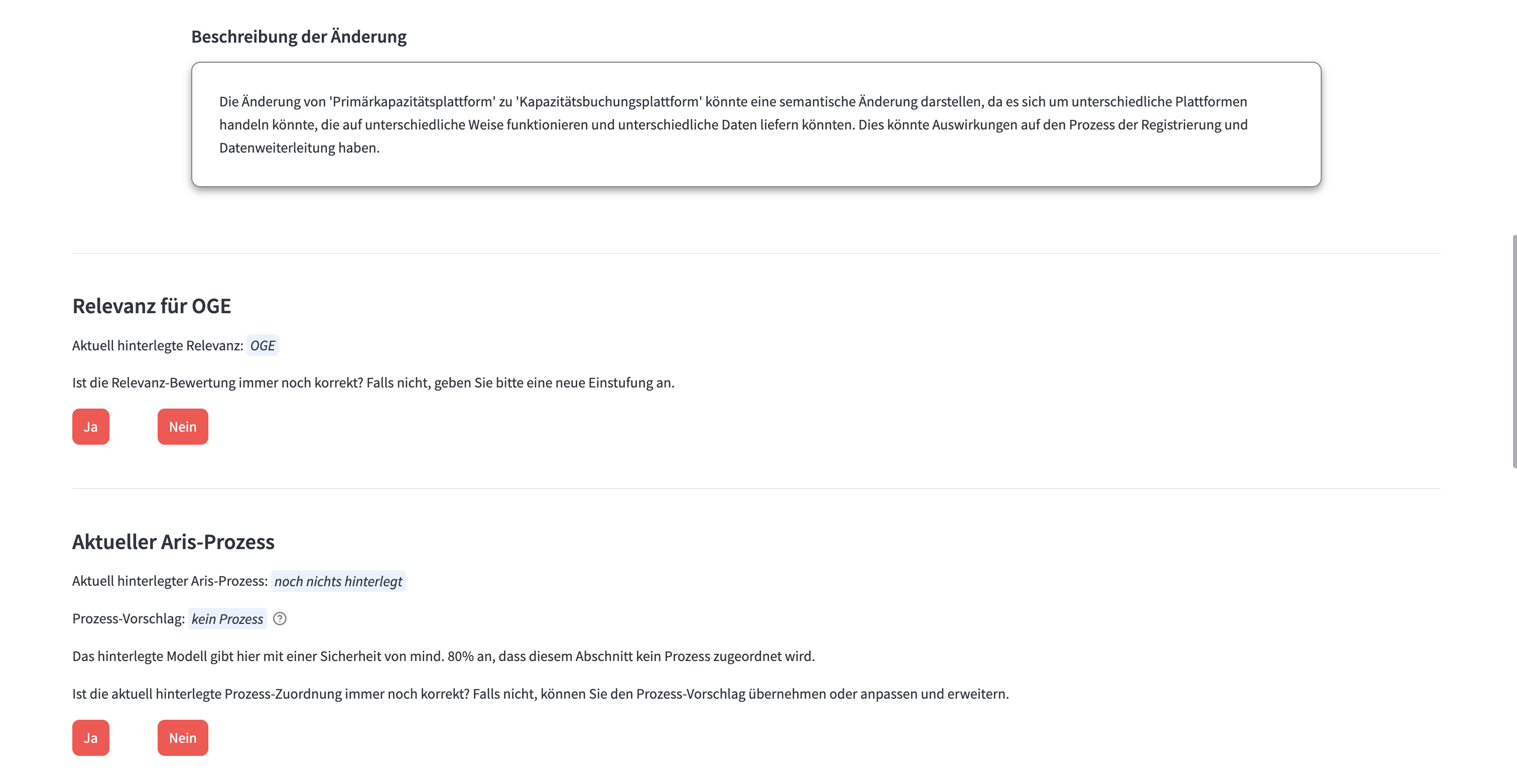Open Grid Europe Increasing Efficiency Through AI: Content Analysis of Legal Texts in the Energy Sector
The increasing number of legal texts and regulations at national, European, and international level poses a considerable challenge for a number of industries – from the energy sector and the healthcare system right through to the financial industry. The continuous monitoring, interpretation, and alignment of these industries’ business processes with the new regulations is a time-consuming task which is frequently performed manually by specialists.
inovex has partnered with Open Grid Europe (OGE) to develop a system for semantically analysing legal texts and regulations using Large Language Models (LLM). The system scrutinizes existing legal texts and regulations before notifying users of specific business processes which may be affected by the changes and need to be adapted. It thus helps to significantly speed up manual working processes.
Regulatory Requirements: Complexity and its Consequences
In many industries, legal regulations and guidelines are of decisive importance. Legal texts are often highly complex and written in legalese, which means that reading and interpreting them is often possible only by experienced readers. This makes the ongoing monitoring and interpreting of legal texts and the subsequent alignment of internal processes in heavily regulated fields a time-consuming task, one which frequently depends on manual evaluations by specialist personnel and ties up considerable resources.
This particularly affects the energy sector – and thus Germany’s largest gas transmission system operator, Open Grid Europe (OGE). For transmission system operators, the collaboration of German gas network operators is regulated by complex legislation: the Gas Cooperation Agreement (Kooperationsvereinbarung Gas (KoV)), the Energy Industry Act (Gesetz über die Elektrizitäts- und Gasversorgung (Energiewirtschaftsgesetz – EnWG)), the decision on the recognition of instruments to increase capacity (Anerkennung von Instrumenten zur Kapazitätserhöhung (ANIKA)), and many other regulations, legal texts, and processes are all relevant and must be taken into account.
From Vision to AI-Supported Solutions
In order to automate the time-consuming and error-prone manual comparison of legal texts, inovex and Open Grid Europe have developed a human-in-the-loop system. This uses an intuitive interface to provide users with an automated overview of content changes in legal texts, including annotations indicating which business processes they affect.
The system is based on the concept of comparing two document versions, one of which (the previous version of the document) is already being used by the company. The system compares these document versions with one another, identifies the differences – both syntactical and semantic – and, using the company’s existing process documentation as a basis, indicates whether the change detected is relevant for Open Grid Europe. It also provides information on the business processes which must be aligned with this change. In doing so, it uses process models of the company’s current processes to generate suggestions as accurately as possible.

The process steps are modelled transparently for users, enabling two document versions to be systematically compared via an intuitive user interface. Users can go through the changes in the documents and, in each case, view information on the semantic change, its relevance for Open Grid Europe, and, where applicable, suggestions as to which business processes could be affected by it. These suggestions can then be accepted or manually overwritten.

The system combines text processing methods, language models for semantic analysis, traditional machine-learning models — and, of course, the human expertise of the individuals making decisions based on the solution’s suggestions.
The Technology Behind the Solution
As the documents involved are typically available in Portable Document Format (PDF), the first step is to extract the text and divide it into logical units, such as chapters and sections. Traditional text algorithms are then used to match up the text segments in the original and modified documents. Next, Azure OpenAI is used to leverage a powerful LLM which semantically interprets the changes and generates a summary of them.
When the system identifies semantic changes, it uses a combination of traditional machine learning and the Azure OpenAI model to assign these changes to the corresponding business processes. This information is made available to end users in a user-friendly Streamlit application via Microsoft Azure.
Conclusion and Future Prospects
The system demonstrates how language models fundamentally support work steps which have, until now, been exclusively performed manually by specialists. This enables LLMs to play a significant role in increasing the efficiency of internal work processes.
The combination of traditional text processing and powerful LLMs into a single system enables Open Grid Europe to monitor, interpret, and implement legal and regulatory changes in a structured and efficient manner.
The fundamental issue of comparing different versions of complex documents and interpreting them appropriately exists in almost all areas and − particularly in heavily regulated industries, such as the financial sector, the healthcare system, and the logistics industry − is a time-consuming task. In such cases, language models are a powerful tool for the efficient detection of semantic changes.



